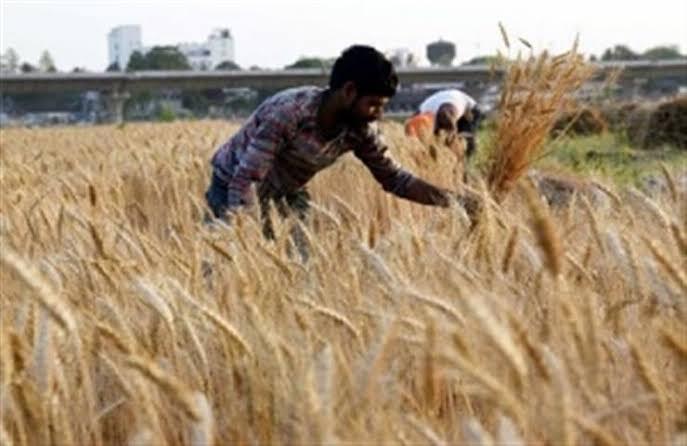Wheat prices have started to decline across India’s Agricultural Produce Market Committee (APMC) yards, as new crop arrivals pick up momentum and production estimates point to a bumper harvest. Traders and industry insiders attribute the softening trend to higher-than-expected output and improved crop quality, easing earlier concerns about adverse weather impacts.
“Wheat production is 10 per cent higher than initial estimates. It is higher than last year. The quality is also good. Fears of the crop being affected by weather have proved to be unfounded,” a New Delhi-based miller said.
According to market sources, the country is witnessing multi-year high arrivals in several APMC markets, boosting confidence in the supply outlook and contributing to price moderation. This development is likely to offer relief to consumers and ease inflationary pressure on food grains.
Trade estimates now suggest that India’s wheat production for the current season could exceed 105 million tonnes (mt), up from earlier projections. The optimism is supported by recent forecasts from both domestic and international agencies. The Agriculture Ministry, in its second advance estimate, has projected wheat output at a record 115.43 mt, while the U.S. Department of Agriculture (USDA) has pegged it slightly lower at 115 mt.
The anticipated surplus is also expected to give the government more room to replenish depleted buffer stocks and potentially reconsider export restrictions if domestic demand and price stability allow.
India is the world's second-largest producer of wheat, and the crop plays a critical role in ensuring national food security and controlling inflation. Last year, extreme heat and erratic weather reduced yields, leading to lower procurement and higher domestic prices. However, favorable weather conditions and expanded sowing this year have reversed the trend.
With harvest operations in full swing across major producing states like Punjab, Haryana, Madhya Pradesh, and Uttar Pradesh, traders expect prices to remain under pressure in the short term, especially as market arrivals increase.
Analysts note that price stabilization will also depend on government procurement volumes under the Minimum Support Price (MSP) scheme, which is currently underway. A robust procurement drive will be key to maintaining market balance and protecting farmers’ interests amid the falling prices.
Follow & Subscribe:
👉 Agri-Food Update on LinkedIn for the latest updates and insights.
🌐 Visit us at www.agri-food-update.com for more information!



